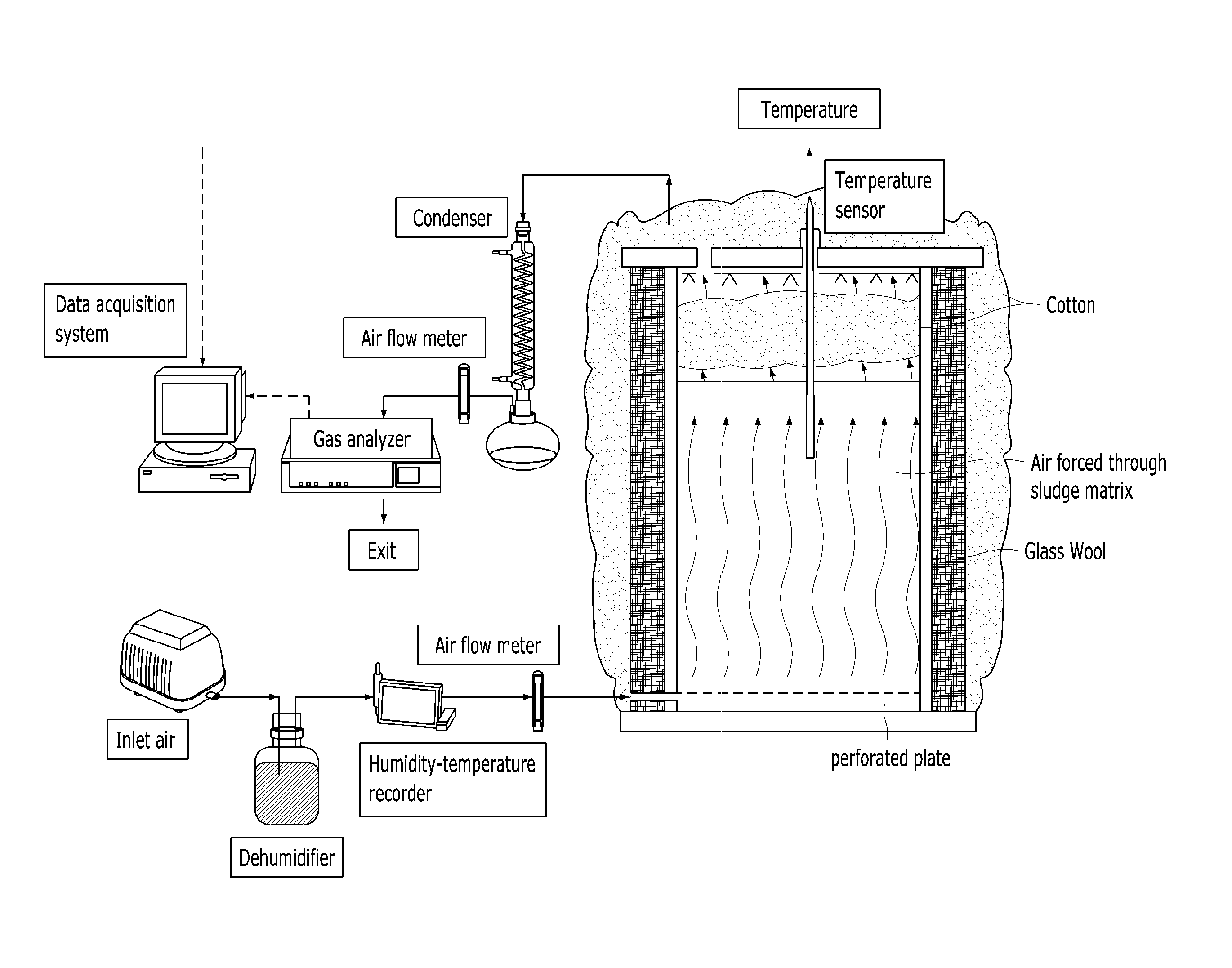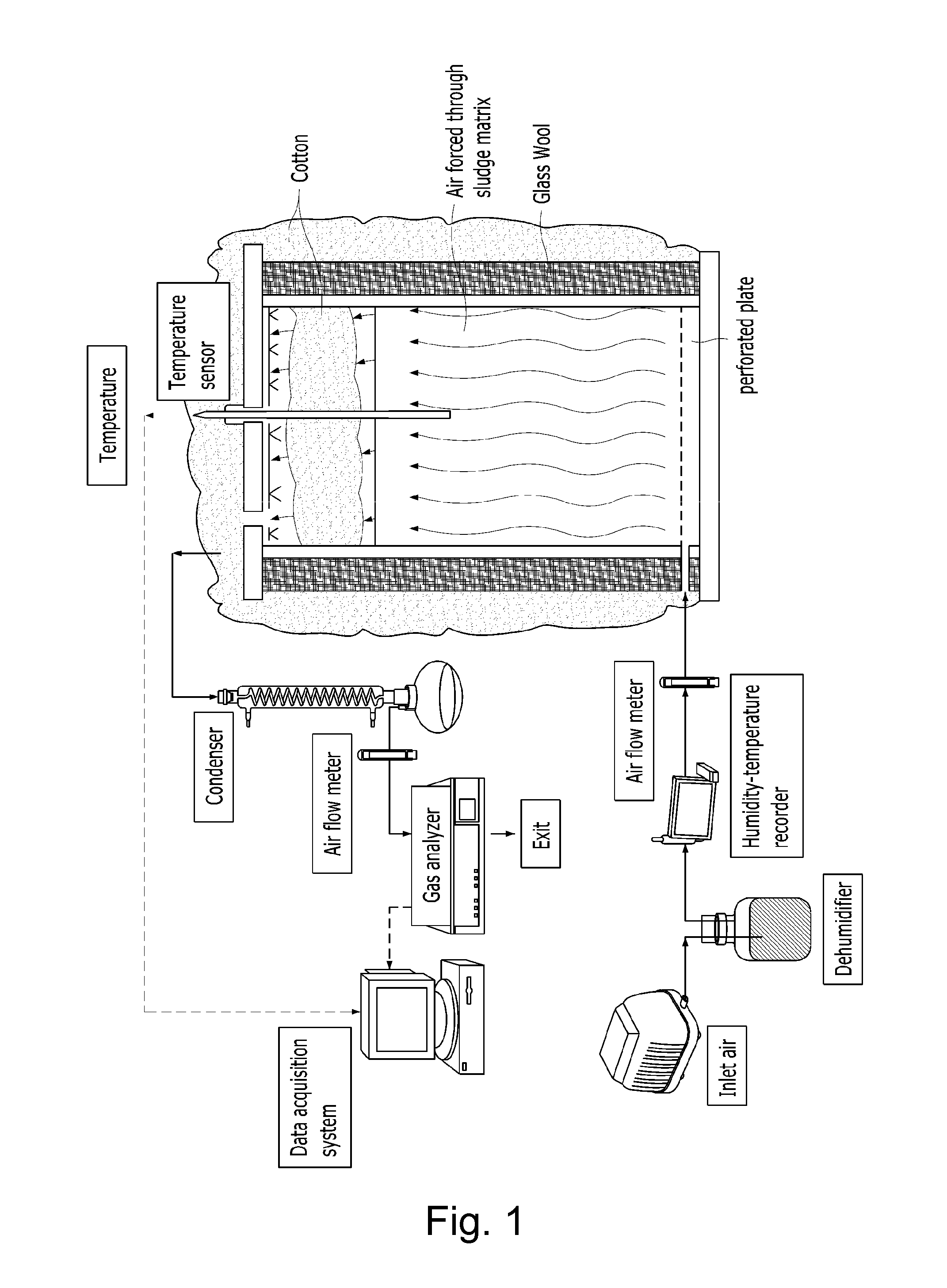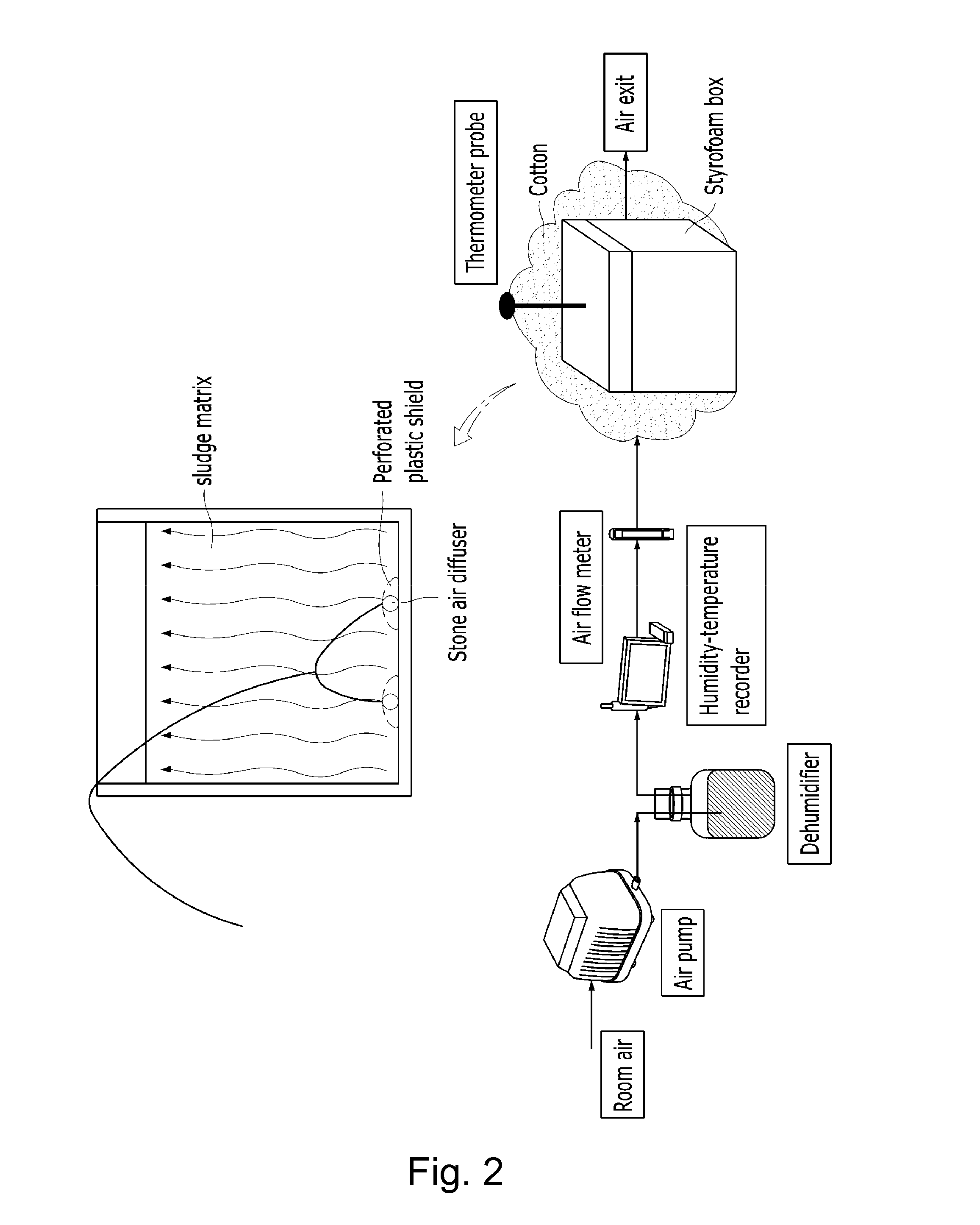Method for zero-discharge treatment of high-concentration organic wastewater via bioevaporation
a technology of organic wastewater and bioevaporation, which is applied in the direction of biological water/sewage treatment, biological sludge treatment, application, etc., can solve the problems of limited treatment of low-concentration organic wastewater, serious affecting local aquatic ecosystems, and anaerobic digestion, so as to reduce the energy consumption of organic wastewater treatment
- Summary
- Abstract
- Description
- Claims
- Application Information
AI Technical Summary
Benefits of technology
Problems solved by technology
Method used
Image
Examples
example 1
Bioevaporation Using Glucose Solution
[0070]Bioevaporation was performed by mixing 404 mL glucose solution (610 g / L) with 7.29 kg biodried sludge (moisture content: 56.5 wt %), adding the mixture into a 28.3 L insulated reactor, followed by air supply thereinto at a rate of 2.04 L / min.
[0071]As shown in FIG. 3, the temperature of the reactor increased rapidly after adding a glucose solution thereinto. The temperature reached 71.4° C. after 28 hours, and returned to room temperature after 96 hours. However, the temperature of the control reactor where the glucose solution was not added was maintained at a temperature around room temperature. Upon reviewing the temperature change, it was confirmed that the microorganisms in the sludge bed utilized glucose as an energy source for their metabolism, and also the lag time was very short.
[0072]As shown in FIG. 4, when the reactor temperature increased the concentration of oxygen decreased while the concentration of carbon dioxide increased. ...
PUM
| Property | Measurement | Unit |
|---|---|---|
| concentration | aaaaa | aaaaa |
| diameter | aaaaa | aaaaa |
| temperature | aaaaa | aaaaa |
Abstract
Description
Claims
Application Information
 Login to View More
Login to View More - R&D
- Intellectual Property
- Life Sciences
- Materials
- Tech Scout
- Unparalleled Data Quality
- Higher Quality Content
- 60% Fewer Hallucinations
Browse by: Latest US Patents, China's latest patents, Technical Efficacy Thesaurus, Application Domain, Technology Topic, Popular Technical Reports.
© 2025 PatSnap. All rights reserved.Legal|Privacy policy|Modern Slavery Act Transparency Statement|Sitemap|About US| Contact US: help@patsnap.com



